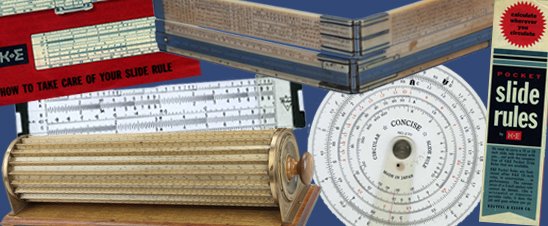This yellow aluminum circular slide rule has three clear plastic indicators, one blank. The other indicator on the front is marked in red to denote the C, CI, A, AF, L, FA, LL2, LL1, DS, DT, and M scales.
- Description
-
This yellow aluminum circular slide rule has three clear plastic indicators, one blank. The other indicator on the front is marked in red to denote the C, CI, A, AF, L, FA, LL2, LL1, DS, DT, and M scales. The indicator on the back is marked in red to denote the C, S,ST, and T scales. A ring of numbers under the scales on the back permits conversions from fractions to decimals.
-
The center of the front is marked: CIRCULAR SLIDE RULE – dial rule (/) PICKETT. The center of the back is marked: dial rule (/) NO 101-C. A triangular Pickett logo, of the form used between 1950 and 1958, appears at the bottom of the center; CHICAGO is printed below the logo.
-
Pickett & Eckel, a slide rule manufacturer based in Chicago and Alhambra, Calif., distributed a small booklet with this instrument, one of the few circular slide rules sold by the company and possibly the only circular model it manufactured. Maurice L. Hartung, a University of Chicago mathematics professor associated with the company, wrote the instruction manual (1981.0922.13). The booklet is copyrighted 1957, and the logo on this copy was used by the company between 1958 and 1962. Thus, this slide rule dates to about 1958.
-
References: Rodger Shepherd, "Pickett Metal Slide Rules," Journal of the Oughtred Society 1, no. 1 (1992): 5–8; Walter Shawlee, "Information About Pickett Slide Rules," Sphere Research Slide Rule Site, http://www.sphere.bc.ca/test/pickett.html.
- Location
-
Currently not on view
- date made
-
ca 1958
- maker
-
Pickett & Eckel, Incorporated
- ID Number
-
1981.0922.12
- catalog number
-
1981.0922.12
- accession number
-
1981.0922
